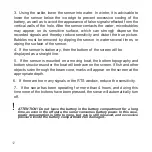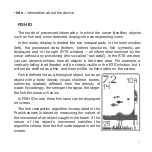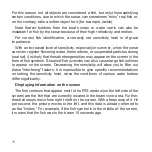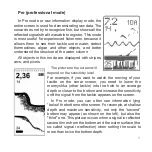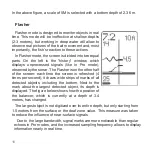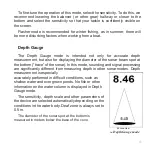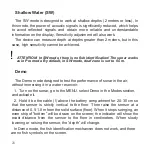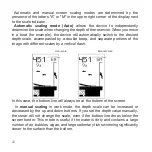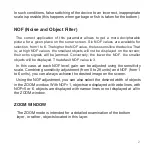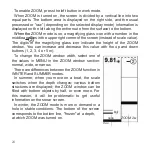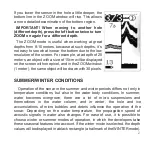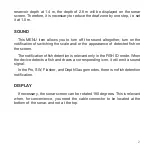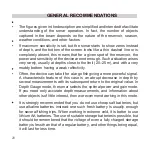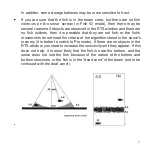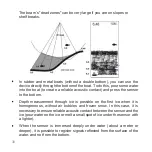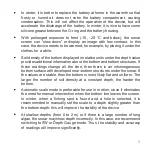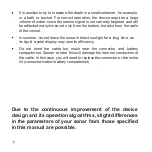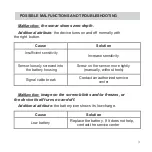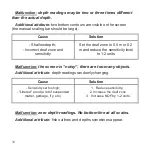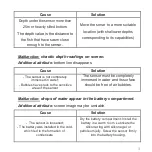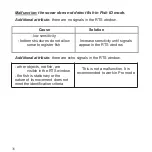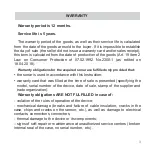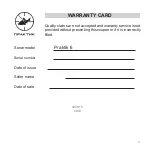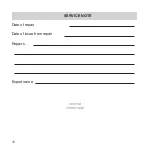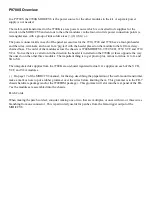
DEAF ZONE
This parameter causes the device to ignore any objects located in the upper
layer of water. There are fixed values: 0.2, 0.5, 1.0, 1.5 and 2.0 m.
The dead zone adjustment allows to cut off unwanted echoes in the surface
layer. Depending on the deaf zone value, the sonar will not register echo
signals in this area. For example, in summer, when water becomes overgrown,
the echo from the microflora surface can even exceed the signal from the
bottom; in such a situation, the sonar will not be able to correctly provide
information about the depth and objects in the water column. In winter, air
bubbles that accumulate under the ice can be a problem.
When is it recommended to change the deaf zone value?
- If the depth reading is unstable, values less than 1 m are often displayed,
although the depth is actually more than 1 m.
It is necessary to increase the deaf zone by one step (for example, from
0.2 to 0.5 or from 0.5 to 1.0).
- If it is necessary to observe the tackle at a great depth (15-25 m). In this
case, in order to clearly display the tackle movement on the screen, it is
necessary to increase the sensitivity, but this will lead to the formation of
interference from ice.
Therefore, the deaf zone value should be increased.
- When working in the Flasher mode at depths greater than 5-7 m, it is
recommended to set the deaf zone to 1.0, 1.5, or 2.0 m.
If the set value of the deaf zone in low tide exceeds the actual depth of the
reservoir, the device will not be able to determine the true bottom, because
the signal reflected from it will be ignored, and the signal will be reflected from
the real bottom. For example, if the deaf zone is set at 1.5 m, and the
26

